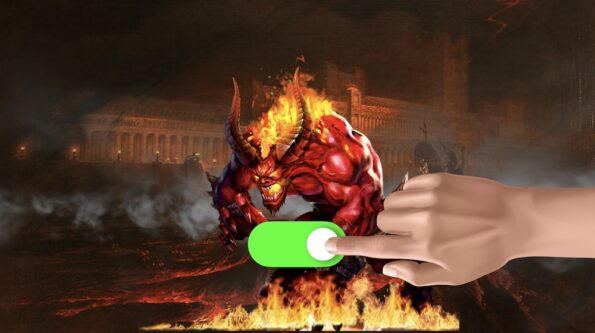Search
To search for an exact match, type the word or phrase you want in quotation marks.
A*DESK has been offering since 2002 contents about criticism and contemporary art. A*DESK has become consolidated thanks to all those who have believed in the project, all those who have followed us, debating, participating and collaborating. Many people have collaborated with A*DESK, and continue to do so. Their efforts, knowledge and belief in the project are what make it grow internationally. At A*DESK we have also generated work for over one hundred professionals in culture, from small collaborations with reviews and classes, to more prolonged and intense collaborations.
At A*DESK we believe in the need for free and universal access to culture and knowledge. We want to carry on being independent, remaining open to more ideas and opinions. If you believe in A*DESK, we need your backing to be able to continue. You can now participate in the project by supporting it. You can choose how much you want to contribute to the project.
You can decide how much you want to bring to the project.

I often return to an article by Bertrand Russell in which the British author writes to an “esteemed reader.” “I don’t know the nature of your beliefs, but, whatever they may be, you must admit that 90 percent of the beliefs of 90 percent of humanity are entirely irrational.” Titled Is There a God?, this 1952 text overturns millennia of traditional theological beliefs with logic and wit. In one of the key moments, Russell writes: “If I were to suggest that there exists a china teapot between the Earth and Mars, orbiting the sun in an elliptical path, no one would be able to refute me, provided I took care to point out that this teapot is far too small to be detected even by our most powerful instruments.”
The gist of the piece is simple: “It is customary to assume that if a creed is widespread, it must be because there must be something reasonable to support it.” The supposed teapot idea is, on paper, unthinkable, but that doesn’t mean we should give up on this theory. Imagine if, suddenly, a tiny, decentralized niche on the internet starts joking about the idea, and from an informal idea it propagates to a crazy collective belief that refuses to disappear. It’s happened before. After a few years of spreading his satire, the “inventor” of Birds Aren’t Real, Peter McIndoe, clarified that it was in fact a critical parody of conspiracy theories. Some of the “believers” of that story, which claimed that “the government had replaced birds with surveillance drones,” continue to support the theory today.
It doesn’t seem odd to anyone that something objectively false can be transformed into a shared belief and is, ironically, the most real and tangible aspect of current media. Reality has become a self-referential beehive in which each voice claims its own perceptual sovereignty, the way the world pretends to view itself after a total collapse of consensus. There is no possible clarity, no shared narratives, only intermittent flashes on black screens, fragments that simulate certainty and compete to impose themselves as reality. It is as if we are watching from afar as our ship approaches Pandemonium (a term popularized by John Milton to name the capital of Hell in his 1667 epic poem Paradise Lost). I am referring specifically to the version redefined by those at the CCRU (The Cyber Culture Research Unit at Warwick) to describe the hyperactivity of digital capitalism, that is, a multitude of simultaneous narratives, each convinced of its own lucidity, which become real as they circulate.
What this entity, Pandemonium, orchestrates has been called by Nick Land, Mark Fisher, and Sadie Plant hyperstition, that is, rumors, conspiracy theories, memetics, and emotional narratives that “come true” when acted out collectively. This is an update of the egregore or the same kind of propaganda that the group of English accelerationist philosophers prophesied before the arrival of social-digital platforms, although I don’t know if they ever imagined how Instagram, X, TikTok, YouTube, and other platforms would act as executors (in real time) of these hyperstitional processes. What was a theoretical provocation in the 1990s has today become an algorithmic infrastructure replete with performative myths that fabricate their own evidence.
It would be mind-boggling, though not entirely untrue, if today’s cultural production was a laboratory manipulated from that demon city. Just a few days ago, the media conversation surrounding Taylor Swift’s new album was monopolized by the belief that one of the songs, Actually Romantic, contains a dig at Charli XCX. It all began with an ambiguous lyric (“I heard you call me ‘Boring Barbie’ when the coke’s got you brave”) and the collective intuition that it contained a deliberate innuendo. Within hours, forums, fandom accounts, and niche media had drawn complete genealogies of the supposed conflict with screenshots, comparisons, cross-theories, retrospective interpretations of gestures in videos of them together, and even viewing statistics. Nothing needs to be confirmed anymore, as emotional plausibility is more than enough for the narrative to thrive. Fans act as hyperstitional communities and produce reality based on conflicts that feed off their own uncertainty.
The most shared stories are those that best anticipate the world. Nick Land himself said that “acceleration doesn’t predict the future, it precipitates it.” Fake news, a very old phenomenon that has acquired new significance in the digital world, is another example, a kind of beta-phase reality, tested by millions of users in real time, which ends up prototyping futures and collective narratives. I remember a conference on post-truth I attended a few years ago where I only wrote down a single quote: “We no longer argue about facts, but rather about which version of them is most useful to us.”
In this context, Pandemonium is seen as order for chaos, a self-organized belief system that replaces public reason with emotional intensity and establishes it as the criterion of truth. Each side constructs its own lore, universe, and ecosystem of references. They also choose their own martyrs and select their own enemies with the same passion that was previously reserved for religion. To extend the metaphor, in his piece Digital Demonology: On the Auto-Production of Content, Matt Colquhoun proposes that these algorithms and/or hyperstitional agents have acquired an almost demonological character.
In regards to our current topic, Colquhoun warns that users do not produce the content, they are actually produced by it. Digital communities function as choirs possessed by a distributed intelligence that does not seek truth or absolute coherence but is only concerned with ensuring that the activity does not stop. In this sense, contemporary fandoms are a secular version of trance. They interpret, react, and ritualize, dominated by their symbolic shaman, that is, motivated reasoning. Subjects feel like authors when in reality they are channels for a narrative that completely exceeds them. The discourse transcends parasociality itself and circulates as an autonomous, viral, and decentered energy, fed by the same fuel that sustains all culture wars: desire, resentment, and recognition. Subjects feel like authors when in reality they are channels for a narrative that completely exceeds them. The discourse transcends parasociality itself and circulates as an autonomous, viral, and decentered energy, fed by the same fuel that sustains all culture wars: desire, resentment, and recognition.
The result of this widespread hallucination is a perceptual plurality and/or “digital feudalism.” Each platform, community, or group establishes its own laws, its own meaning, gods, antagonists, and rewards. Reality becomes territorialized, and each community defends its own as if it were a sovereign territory. It packages and dramatizes its own proof-of-belief. In this fragmented geography, reality becomes optional. Everything is real-ish or fake-ish until a community decides otherwise. In fact, I sometimes wonder what would happen today if a story like Carl Sagan’s dragon in his garage (The Demon-Haunted World, 1995) were to circulate. People would surely stand behind their ad ignorantiam argument (that no one can actually prove that “a fire-breathing dragon” didn’t live in Sagan’s garage) and we would be unable to keep that story from truly burning us.
Sometimes I smirk when I think about how I would illustrate Pandemonium with a freak show-like assortment of demons, imps, and scheming goons of infinite types and remixes, all connected to the same central computer manipulating narratives and beliefs in real time, organically, while talking to each other. One of them, I sometimes imagine, could have the face of Curtis Yarvin or Steve Bannon, that modern Beelzebub who, inspired by accelerationists, popularized the phrase “flood the zone with shit” for the political arena. (The best way to defeat a narrative is not to refute it but to drown it in thousands of versions). Another could look like Jacques Lacan, the man who said that “every truth has the structure of a fiction.”
Perhaps this city of demonic creatures that play with our perception only serves to make the problem visible and to infantilize it. Perhaps Pandemonium resembles a fog, an atmospheric condition that envelops us, overwhelms us, and ultimately hypnotizes us. Amid this strange miasma, hundreds of thousands of incompatible truths coexist. The system, almost like a misapplied ontological protection mechanism, learns to give us back the version of the world that best protects our emotional balance. Don’t tell me it doesn’t sound good, it has to be true!

Frankie Pizá (Palma de Mallorca, 1984) is a cultural critic, educator, and founder of FRANKA™️, an independent media that analyzes the intersection of arts, technology, and culture. His work centers on a simple and unusual idea: “protecting the context” in a time of increasing disinformation, creative precariousness, and algorithmic noise. He has worked on landmark projects such as Primavera Sound, Red Bull Music Academy, and Concepto Radio, and has collaborated with various media and cultural platforms. In recent years, he has established himself as one of the most unique voices in the Spanish language when it comes to interpreting phenomena. His essays balance cultural criticism and contemporary theory and seek to explain what is happening in real time, using critical and accessible language.
"A desk is a dangerous place from which to watch the world" (John Le Carré)